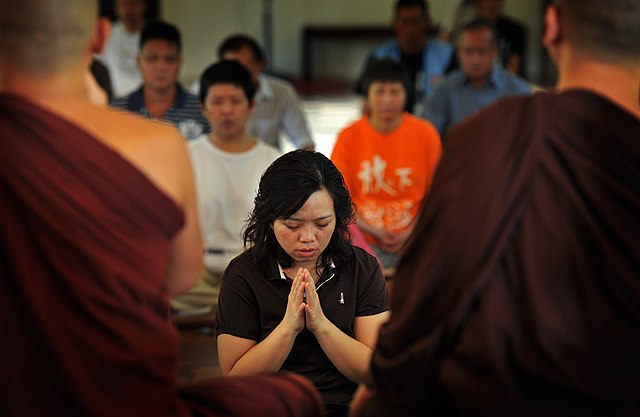In English translations of Buddhist texts, householder denotes a variety of terms. Most broadly, it refers to any layperson, and most narrowly, to a wealthy and prestigious familial patriarch. In contemporary Buddhist communities, householder is often used synonymously with laity, or non-monastics.
Buddhist monks giving a teaching or blessing to lay people in Myanmar
An illustration from an 1866 Japanese book. A long-haired householder, who is an incarnation of Bodhisattva Kannon, gives a sermon to folks.
Buddhist monasticism is one of the earliest surviving forms of organized monasticism and one of the fundamental institutions of Buddhism. Monks and nuns, called bhikkhu and bhikkhuni, are responsible for the preservation and dissemination of the Buddha's teaching and the guidance of Buddhist lay people. Three surviving traditions of monastic discipline (Vinaya), govern modern monastic life in different regional traditions: Theravada, Dharmaguptaka, and Mulasarvastivada.
Monks outside the temple at the Tibetan Buddhist monastery, Rato Dratsang, in India, January 2015.
At the peak of its power, Japan's Enryaku-ji was a huge complex of as many as 3,000 sub-temples and a powerful army of warrior monks (僧兵, sōhei).
Young Buddhist monks in Tibet practising formal debating
A Buddhist monk in Kaohsiung, Taiwan, wearing the robes of an abbot in a monastery






